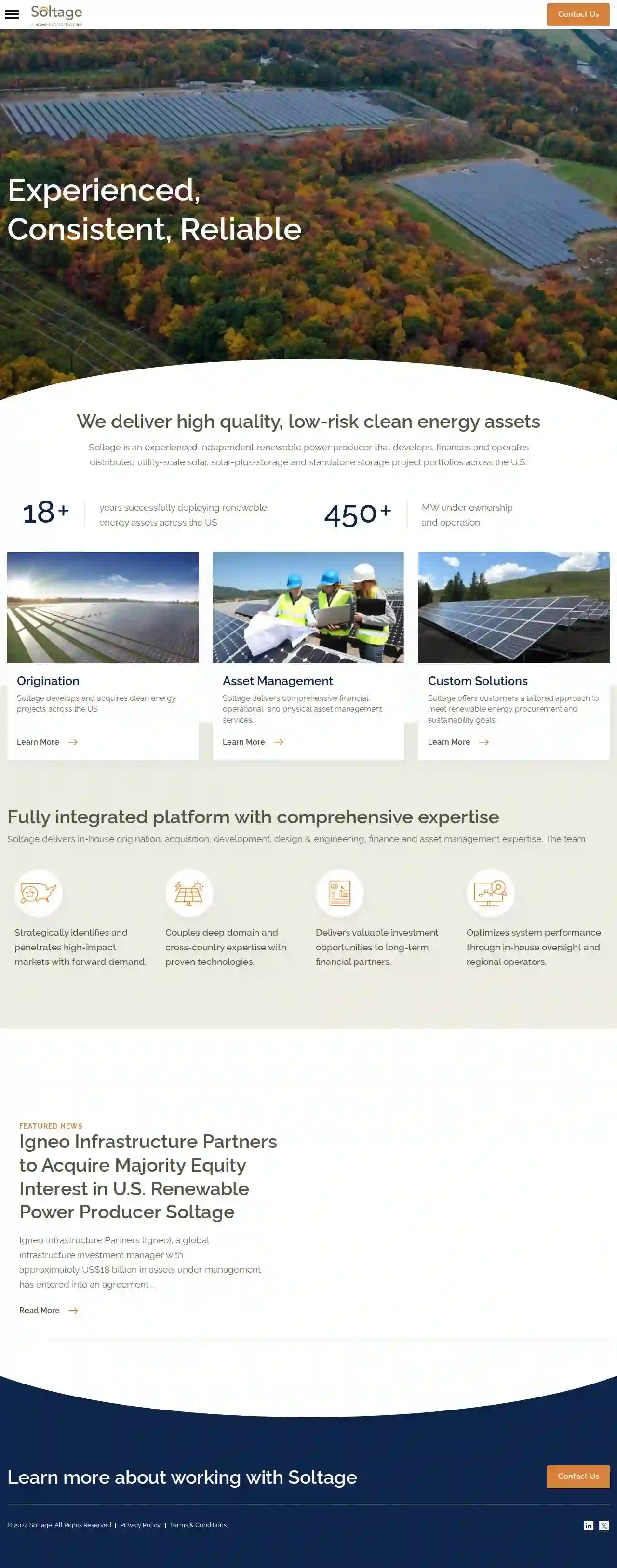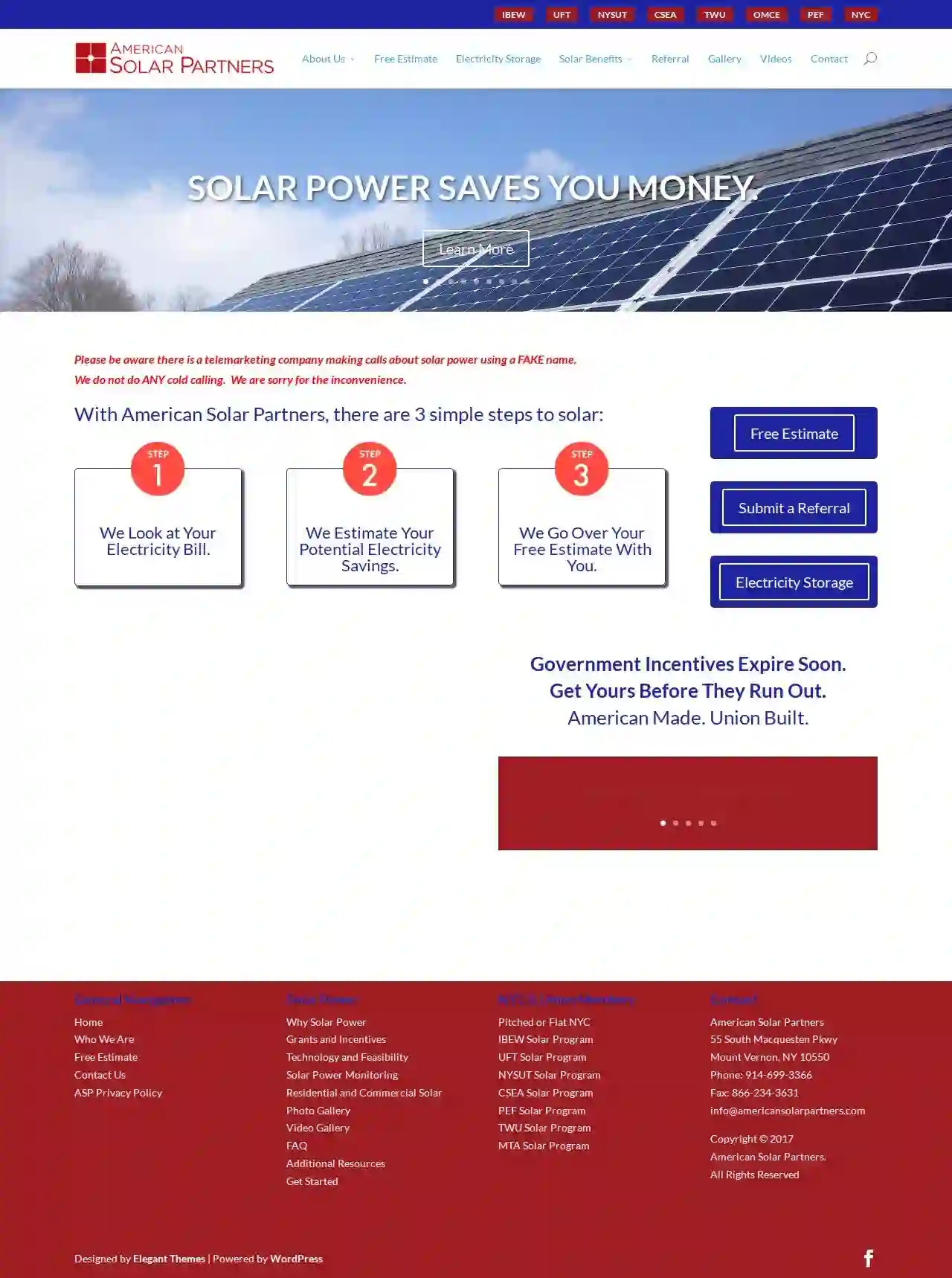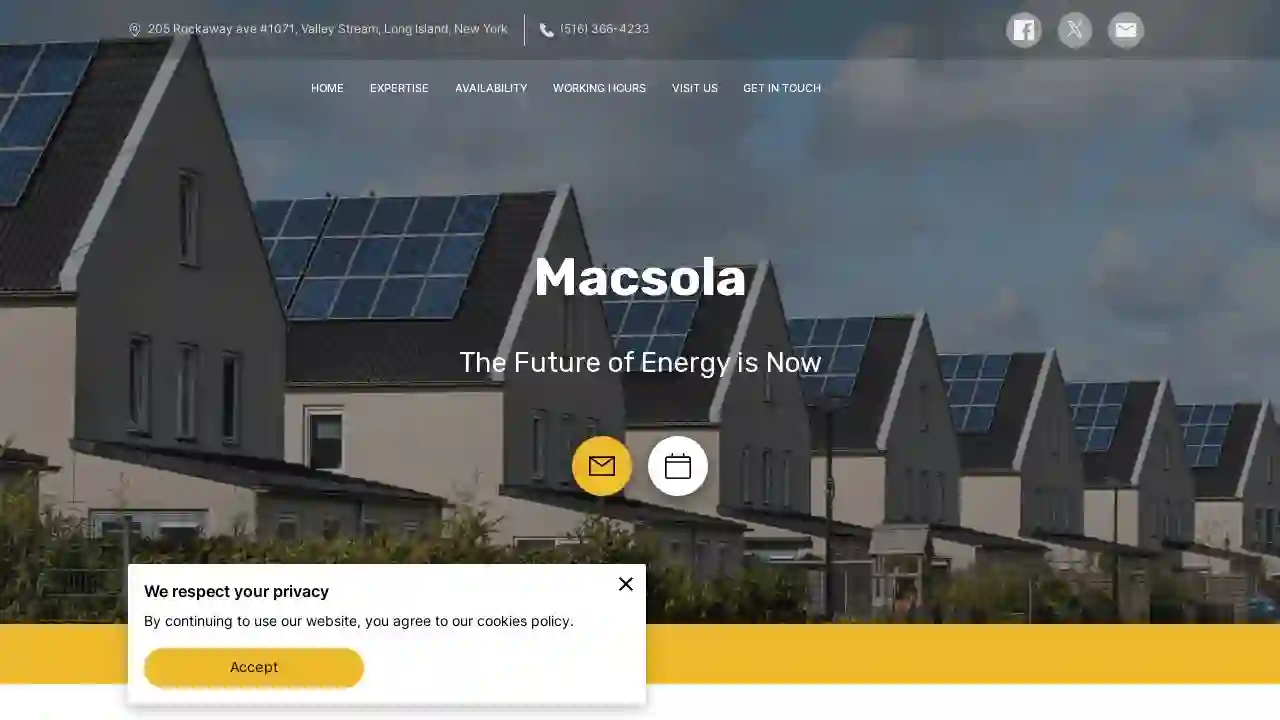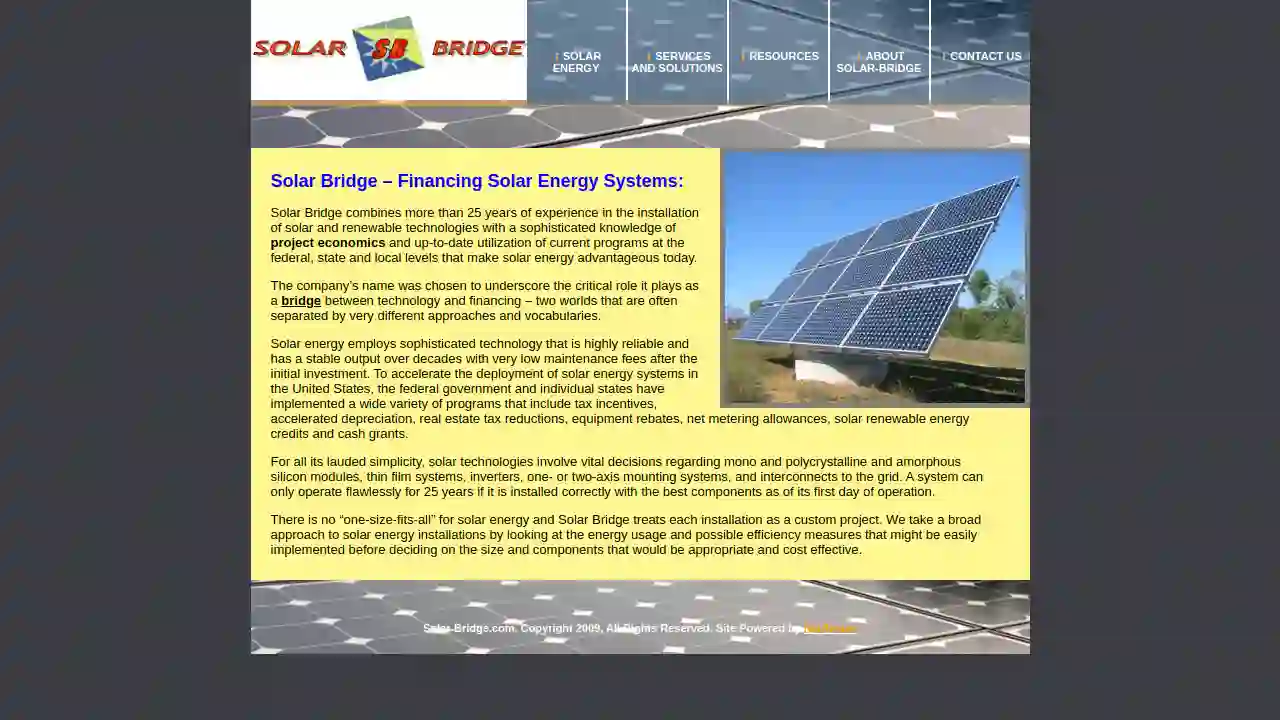Solar Installers Forks
Find the best Solar Installers in Forks
Receive up to 3 Local Solar Installers quotes for your project today! Compare profiles, reviews, accreditations, portfolio, etc... and choose the best deal.

Solar One
4.910 reviews9-03 44th Road, 201, Long Island City, 11101, USSolar One is a 501(c)(3) not-for-profit organization whose mission is to design and deliver innovative education, training, and technical assistance that fosters sustainability and resiliency in diverse urban environments. By catalyzing new ways of living and working that respond to a world affected by climate change, Solar One is transforming the way people think about energy, the urban environment, and resilience.
- Services
- Why Us?
- Accreditations
- Our Team
- Testimonials
- Gallery
Get Quote
Soltage, LLC
44 reviews333 Washington Street, Suite 401, Jersey City, 07302, USSoltage is an experienced independent renewable power producer that develops, finances and operates distributed utility-scale solar, solar-plus-storage and standalone storage project portfolios across the U.S. Founded in 2005, the company has successfully deployed renewable energy assets across the U.S. with over 450+ MW under ownership and operation. Soltage delivers high-quality, low-risk clean energy assets through its comprehensive platform with origination, acquisition, development, design & engineering, finance and asset management expertise.
- Services
- Why Us?
- Accreditations
- Our Team
- Testimonials
- Gallery
Get Quote
Solar Masons
Scranton, Pennsylvania, 800 James Ave, Suite 209, 18510, USSolar Mason is a trusted partner and industry leader in Solar Energy. Established by Noel Segui, a U.S. Army Infantry veteran who valiantly served in support of Operation Enduring Freedom from 2008-2016, Solar Mason's mission is grounded in sustainability, cost-efficiency, and innovation. Our passion for clean energy and commitment to reducing carbon footprints drives our provision of high-quality solar energy systems, ranging from small residential projects to large-scale utility projects such as the 5-megawatt solar farm project in Devens, Massachusetts.
- Services
- Why Us?
- Accreditations
- Our Team
- Testimonials
- Gallery
Get Quote
Geoscape Solar
4.834 reviewsFlorham Park, NJ, North Jersey Office, 30A Vreeland Road, 07932, USGeoscape Solar is a leading provider of solar energy solutions in New Jersey, with a vision to live in a world where renewable energy and storage systems replace fossil fuels. They offer customized solutions for each customer's energy needs, ensuring lower operating expenses and the fastest ROI for businesses. Geoscape Solar has two locations in the New Jersey metropolitan area and serves various industries including auto dealerships, agriculture, work spaces, places of worship, hotels & resorts, schools, and healthcare.
- Services
- Why Us?
- Accreditations
- Our Team
- Testimonials
- Gallery
Get Quote
American Solar Partners, LLC
3.686 reviewsMount Vernon, NY, USA, 55 South Macquesten Pkwy, 10550, USAmerican Solar Partners (ASP) is a New York–based solar power company that designs, finances, and installs residential and commercial solar power projects. Our goals are to help people save money on electricity costs, to increase the use of renewable energy to combat climate change, and to create good, green union jobs.
- Services
- Why Us?
- Accreditations
- Our Team
- Testimonials
- Gallery
Get Quote
Green Eco Solutions
4.7471 reviews123 Main St, Allentown, 18104, USGreen Eco Solutions is a local home improvement contractor in Allentown, PA, offering high-quality window, door, roofing, siding, and bath replacements. They provide services designed to lower utility bills and increase the value of your home. Their team of dedicated home improvement experts is BPI and Owen's Corning Certified Energy Experts.
- Services
- Why Us?
- Accreditations
- Our Team
- Testimonials
- Gallery
Get Quote
Sunny Earth
55 reviewsStreet 177, Great Neck, 10 Bond Street, 11021, USSunny Earth is dedicated to helping homeowners take control of their power by installing solar systems. With a focus on honesty and excellence, Sunny Earth aims to build a sunny future for the Earth. The company offers free guidebooks for homeowners to understand how solar works and what to look for when shopping for solar.
- Services
- Why Us?
- Accreditations
- Our Team
- Testimonials
- Gallery
Get Quote
Advanced Solar Solutions
538 reviews14134 71st Ave, Queens, NY, 11367, USAdvanced Solar Solutions is a local NYC solar installer who handles every step of the installation process in-house for quality and efficiency. Our solar panels come with a 25-year warranty, ensuring a reliable energy solution. We exclusively use Enphase micro inverters for maximum energy output and panel level monitoring of your system. With our extensive knowledge of local regulations and incentives, we can offer a fast and seamless turnaround time!
- Services
- Why Us?
- Accreditations
- Our Team
- Testimonials
- Gallery
Get Quote
Macsola
205 Rockaway Ave #1071, Valley Stream, 11580, USMacsola is a family-owned, black-owned, and Latino-owned business based in Long Island, New York. They specialize in solar panel sales and consulting, aiming to make New York City the greenest place on earth. Their mission is to provide affordable and efficient solar panels to meet business and home power requirements while saving on utility bills. They offer free consultations and are partners with NYSERDA.
- Services
- Why Us?
Get Quote
Solar Bridge LLC
340 East 64th Street, New York, 10065, USSolar Bridge combines more than 25 years of experience in the installation of solar and renewable technologies with a sophisticated knowledge of project economics and up-to-date utilization of current programs at the federal, state and local levels that make solar energy advantageous today. The company’s name was chosen to underscore the critical role it plays as a bridge between technology and financing – two worlds that are often separated by very different approaches and vocabularies.
- Services
- Why Us?
- Accreditations
- Our Team
- Gallery
Get Quote
Over 4,210+ Solar Installers on our directory
Our solar providers operate in Forks and surrounding areas!
SolarCompaniesHub has curated and vetted the Best Solar Installers in and around Forks. Find a reliable pro today.
Frequently Asked Questions About Solar Installers
- Draw electricity from the grid when your solar panels aren't producing enough power (e.g., at night)
- Sell excess solar electricity back to the grid through net metering.
- Your current energy usage
- The size of your solar system
- Your local electricity rates
- The amount of sunlight your panels receive
- Available net metering policies
What is the difference between grid-tied and off-grid solar systems?
Can I go completely off-grid with solar panels?
How much can I save on my electricity bill with solar panels?
What happens to my solar panels during a power outage?
What is the difference between grid-tied and off-grid solar systems?
- Draw electricity from the grid when your solar panels aren't producing enough power (e.g., at night)
- Sell excess solar electricity back to the grid through net metering.
Can I go completely off-grid with solar panels?
How much can I save on my electricity bill with solar panels?
- Your current energy usage
- The size of your solar system
- Your local electricity rates
- The amount of sunlight your panels receive
- Available net metering policies